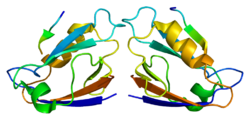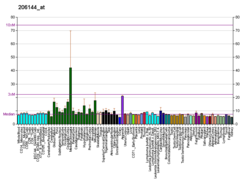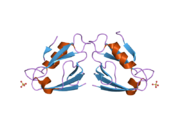
Caveolin-1 is a protein that in humans is encoded by the CAV1 gene.
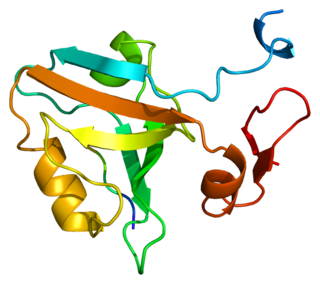
PSD-95 also known as SAP-90 is a protein that in humans is encoded by the DLG4 gene.

Discs large homolog 1 (DLG1), also known as synapse-associated protein 97 or SAP97, is a scaffold protein that in humans is encoded by the SAP97 gene.

Zonula occludens-1 ZO-1, also known as Tight junction protein-1 is a 220-kD peripheral membrane protein that is encoded by the TJP1 gene in humans. It belongs to the family of zonula occludens proteins, which are tight junction-associated proteins and of which, ZO-1 is the first to be cloned. It was first isolated in 1986 by Stevenson and Goodenough using a monoclonal antibody raised in rodent liver to recognise a 225-kD polypeptide in whole liver homogenates and in tight junction-enriched membrane fractions. It has a role as a scaffold protein which cross-links and anchors Tight Junction (TJ) strand proteins, which are fibril-like structures within the lipid bilayer, to the actin cytoskeleton.

Afadin is a protein that in humans is encoded by the AFDN gene.

Peripheral plasma membrane protein CASK is a protein that in humans is encoded by the CASK gene. This gene is also known by several other names: CMG 2, calcium/calmodulin-dependent serine protein kinase 3 and membrane-associated guanylate kinase 2. CASK gene mutations are the cause of XL-ID with or without nystagmus and MICPCH, an X-linked neurological disorder.

Rho guanine nucleotide exchange factor TIAM1 is a protein that in humans is encoded by the TIAM1 gene.
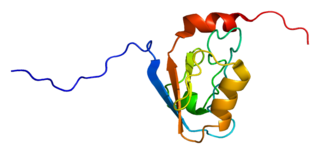
Disks large homolog 3 (DLG3) also known as neuroendocrine-DLG or synapse-associated protein 102 (SAP-102) is a protein that in humans is encoded by the DLG3 gene. DLG3 is a member of the membrane-associated guanylate kinase (MAGUK) superfamily of proteins.

Disks large homolog 2 (DLG2) also known as channel-associated protein of synapse-110 (chapsyn-110) or postsynaptic density protein 93 (PSD-93) is a protein that in humans is encoded by the DLG2 gene.

Brain-specific angiogenesis inhibitor 1 is a protein that in humans is encoded by the BAI1 gene. It is a member of the adhesion-GPCR family of receptors.

Alpha-actinin-4 is a protein that in humans is encoded by the ACTN4 gene.
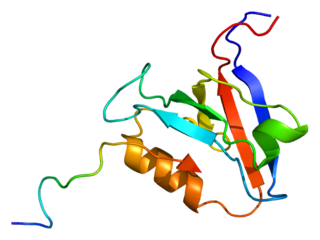
Tyrosine-protein phosphatase non-receptor type 13 is an enzyme that in humans is encoded by the PTPN13 gene.

Potassium voltage-gated channel subfamily A member 4 also known as Kv1.4 is a protein that in humans is encoded by the KCNA4 gene. It contributes to the cardiac transient outward potassium current (Ito1), the main contributing current to the repolarizing phase 1 of the cardiac action potential.

Disks large homolog 5 is a protein that in humans is encoded by the DLG5 gene.
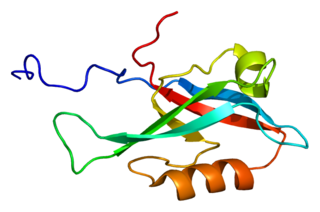
InaD-like protein is a protein that in humans is encoded by the PATJ gene.

Disks large-associated protein 1 (DAP-1), also known as guanylate kinase-associated protein (GKAP), is a protein that in humans is encoded by the DLGAP1 gene. DAP-1 is known to be highly enriched in synaptosomal preparations of the brain, and present in the post-synaptic density.

Membrane-associated guanylate kinase, WW and PDZ domain-containing protein 2 also known as membrane-associated guanylate kinase inverted 2 (MAGI-2) and atrophin-1-interacting protein 1 (AIP-1) is an enzyme that in humans is encoded by the MAGI2 gene.

55 kDa erythrocyte membrane protein is a protein that in humans is encoded by the MPP1 gene.

Membrane-associated guanylate kinase, WW and PDZ domain-containing protein 3 is an enzyme that in humans is encoded by the MAGI3 gene.

Angiomotin-like protein 1 is a protein that in humans is encoded by the AMOTL1 gene.
